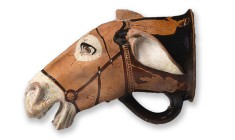Market actors refer to a legitimate antiquities market and a separate illegitimate market, however weight of the research indicates that there is a mix of legality and illegality at all points of the supply and demand chain. The antiquities market is a grey market, which makes it difficult to regulate and police. For decades, market actors and antiquities trade have relied on “self ” or “auto” regulation of the market claiming that objects with better provenance sell better and buyers avoid dubious sellers, however, these claims are not supported by evidence and the market does not police itself. In this chapter, we will discuss why “self ” regulation has not worked and present ideas for Europe to move forward with regulating the market beyond ideas of import and export control. Based on the data gathered during European Commission-funded research, we suggest three pathways as a way forward: creating policies that do not rely on market’s “self” regulation, providing new technology for policing that reflect real operational needs, and reconsidering our own role as experts in the maintenance of markets’ greyness. To regulate and police this grey market we need to change our approaches and to support the kind of research and cooperative infrastructure that will allow for innovative practice and policy development.
